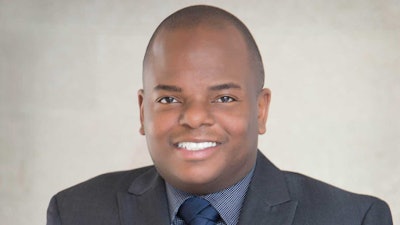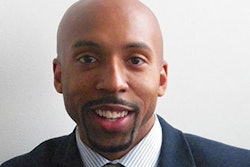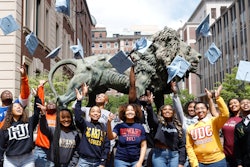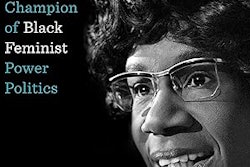The recent U.S. Supreme Court ruling that affirmative action in college admission decisions was unconstitutional sent shock waves throughout the higher education community. Many institutions seeking to balance the racial composition of their student bodies are left to wonder about the next steps. Seen as a victory for some who view themselves as a new unprotected class, the ruling represents a setback for others who have experienced marginalization based on their race. Yet leading up to the federal ruling, a string of state legislative actions — each seeking to hobble or even decimate diversity, equity, and inclusion (DEI) activities and programming on university campuses — provides a telling story of a divided national mindset.
Coinciding with the COVID-19 pandemic, the ruthless death of George Floyd and many other African Americans who suffered police brutality ushered in cries for racial justice that reverberated across all sectors of society. Higher education quickly doubled down on its DEI commitment, reaffirming the importance of safe learning spaces for marginalized and underrepresented groups. At the same time, former President Trump’s executive order promulgated opposition for a racialized and sexualized America. The order sought to disavow and exterminate any notions of historical or contemporary racism and sexism in the foundation and fabric of the American Republic. Dr. Monica Williams Shealey
Dr. Monica Williams Shealey
We believe DEI is largely misunderstood and overly focused on race as a default. This is not to say that the construct of race is not important for understanding American history, politics, and civics; for we understand our nation has not fully reconciled its racial tensions. Race, a construct created to distinguish and distance peoples of color from their European counterparts, is indeed a political apparatus. As such, race is a mainstay continually being redefined and employed in inclusionary, or exclusionary, fashion. We also believe that DEI remains vitally necessary in higher education, and here’s why. DEI will continue to shape higher education culturally, economically, and politically.
1. DEI and the culture of higher education. Approximately two million students begin post-secondary education each year. Diversity among those entering college includes, but is not limited to, veterans and active-duty service women and men, first-generation students, and adult learners. More than 40 million adults, typically under the age of 35, have completed some college education but have not received a degree. Additionally, the racial demographics of school age populations grow increasingly diverse. Minoritized students will account for more than 50% of the US population of high school graduates as soon as 2036, according to a 2020 report from the Western Interstate Commission for Higher Education. Another important aspect of diversity is ability. Students with identified disabilities comprise 19% of undergraduate enrollment, that’s nearly one-in-five. About 12% of graduate students report having a disability. Yet, 25% of first-time college students with disabilities drop out within the first year. Diversity identity is intersectional as well. Several studies estimate that around 15% of young adults on the autism spectrum identify as trans or non-binary, and 70% (or more) identify with a sexuality label other than heterosexual. These demographics of diversity are (re)shaping the culture of higher education.
 Dr. Jacob Easley II
Dr. Jacob Easley II
2. DEI and economics in higher education. The history of higher education is not known for its diversity. Civil rights era legislation changed the landscape with the passing of the Higher Education Act (HEA). Title IV of the HEA was designed “to strengthen the education resources of our colleges and universities and to provide financial assistance for students in postsecondary and higher education.” The U.S. government dispersed more than $91 million in Title IV funds in 2021. More than 85% of first-time full-time, undergraduate students across four-year public and private institutions receive Title IV support and more than 70% for those attending two-year institutions. Institutional eligibility for Title IV funds affords them the opportunity to admit and support a diverse student population based on economic means.
According to the Organization for Economic Cooperation and Development (OECD), of which the U.S. is a member, cognitive diversity has long reaching benefits to a country’s economy and inclusive growth. Following the prevailing logic that higher education is designed to prepare an educated workforce, cognitive diversity is a major outcome of DEI. Defined as differences in information processing styles and perspectives, cognitive diversity is known to increase skills for team problem solving in the workplace, to shore up a firm’s connectivity with an increasingly diverse consumer base globally, and to attract consumers and investors who care about corporate social responsibility.
3. DEI and politics in higher education. Since its inception, U.S. higher education has routinely been shrouded in the politics of inclusion and exclusion. Even today, the perception of higher education as an ivory tower of elitism persists. A defining tenet of the intellectual prowess higher education affords rests with academic freedom — freedom needed for cognitive diversity. Recent state laws (see Florida, Texas, and Ohio, as examples) have sought to limit DEI activities or freedom of intellectual expression on public higher education campuses. There are 40 bills in 22 states that prohibit DEI offices or staff, ban mandatory diversity training, prohibit institutions from using diversity statements in hiring and promotion, or prohibit colleges from using race, sex, color, ethnicity, or national origin in admissions or employment. These laws stymie the capacity for higher education to systematically develop policies, practices, and cultures of diversity inclusion — a divided mindset.
Agendas for color blindness, ability blindness, access blindness, and LGBTQIA+ blindness ignore the needs and strengths of individuals from diverse communities. Such agendas undermine a healthy, pluralistic, and global society, not to mention post-secondary educational attainment for marginalized students. A commitment to DEI in higher education is worthy of our support today, less society suffers greater inequities going forward.
Dr. Jacob Easley II, is CEO of Xcelerated Excellence Consulting and is a higher education administrator.
Dr. Monika Williams Shealey is Dean of the College of Education and Human Development at Temple University and former Senior Vice President for Diversity, Equity and Inclusion.


















